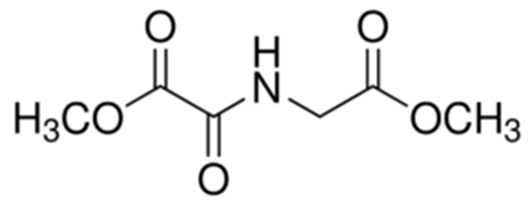
Blog
-
Geiger Readings for May 20, 2014
Ambient office = 117 nanosieverts per hourAmbient outside = 105 nanosieverts per hourSoil exposed to rain water = 117 nanosieverts per hourIceberg lettuce from Top Foods = 105 nanosieverts per hourTap water = 100 nanosieverts per hourFiltered water = 87 nanosieverts per hour -
Radioactive Waste 78 – Senate Committee Grills Nuclear Industry Representative
Last week, the United States Senate Environmental and Public Works Committee convened a panel of specialists to answer questions about the safety and security of decommissioned nuclear reactors. Barbara Boxer, the Democratic chairwoman of the committee asked the specialists whether the spent fuel stored on-site at decommissioned reactors was being properly secured. The fact that five nuclear reactors have been chosen for decommissioning recently elevates the importance of the question. The on-site spent fuel is kept in pools that must be cooled, cleaned and closely monitored. Critics of the nuclear industry say that such spent fuel pools are vulnerable to accident or attack.
As Ms. Boxer said, “The reactors may be shut down, but the risk of an accident or attack have not gone away.” In light of the fact that an accident or an attack could lead to a fire that could release large amounts of radiation, she suggested that the fuel should be taken from the pools and stored in concrete and steel dry casks on-site. These cask would be safer than the spent fuel pools but the current cask design must be improved to prevent gas buildup that could cause explosions.
The Nuclear Regulatory Commission and the industry experts claimed that there was sufficient oversight and security already in place to assure the security and safety of the fuel in the pools. Ms. Boxer raised questions about the spent fuel stored at the closed San Onofre nuclear power station. She asked if the experts were concerned about the fact that there were twenty six hundred fuel assemblies stored in pools designed to hold sixteen hundred fuel assemblies. The experts assured her that they considered the spent fuel at San Onofre to be safely secured.
The problem is exacerbated by the fact that the Federal government failed in its promise to have a national nuclear waste repository operating by 1998. The Yucca Mountain Repository project was cancelled a few years ago and the best current estimated for opening a functional repository is 2050. The nuclear industry in the United States is in decline and the cost of storing spent fuel on-site is rising. Nuclear reactor operators have been paying a fee for each fuel assembly into a fund for the creation of a national repository. Citing the failure of the Federal government to keep its promise to open a repository in 1998, the operators are demanding a refund of the fees they have paid that now amount to billions of dollars. Even so, the projected cost of dealing with current spent nuclear fuel has risen past the money that is now in the fund. Critics of returning the money point out that if the money is taken out of the fund now, future growth of the fund through interest payments on investment would be prevented.
Senators Boxer, Markey and Sanders are sponsoring legislation to force the operators of nuclear reactors to apply the same standards of security, safety and emergency preparedness to closed reactors that are currently required for operating reactors. The industry experts claim that in about fifteen months, the spent fuel in a pool would be cool enough so that an accident or attack would not result in a dangerous release of radioactive materials. They complained that maintaining full-scale emergency capacity at a close reactor would cost twenty million dollars a year and would deplete their decommissioning funds
The nuclear industry has convinced a Federal appeals court that the collection of fees should stop because there is no longer a functioning program for a national nuclear waste repository. The collection of fees ended last week. There have been efforts to start a new project to site and construct a repository but Republicans have demanded that the Federal government complete the work necessary to open a repository at Yucca Mountain.
-
Radiation News Roundup May 19, 2014
Studies indicate that a great deal of Fukushima fallout has reached California. majiasblog.blogspot.jp
There is now a total of 50 confirmed thyroid cancer among children in Fukushima prefecture. fukuleaks.com
Russia’s state-owned Vnesheconombank is to provide a loan of $500 million over eight years for the financing of Belarus’s first nuclear power plant under a newly signed agreement. world-nuclear-news.com
-
Geiger Readings for May 19, 2014
Ambient office = 113 nanosieverts per hourAmbient outside = 99 nanosieverts per hourSoil exposed to rain water = 103 nanosieverts per hourBanana from Costco = 77 nanosieverts per hourTap water = 113 nanosieverts per hourFiltered water = 105 nanosieverts per hour -
Geiger Readings for May 18, 2014
Ambient office = 131 nanosieverts per hourAmbient outside = 87 nanosieverts per hourSoil exposed to rain water = 83 nanosieverts per hourRed seedless grapes from Top Food = 92 nanosieverts per hourTap water = 90 nanosieverts per hourFiltered water = 86 nanosieverts per hour -
Geiger Readings for May 17, 2014
Ambient office = 90 nanosieverts per hourAmbient outside = 114 nanosieverts per hourSoil exposed to rain water = 134 nanosieverts per hourRaw peanuts from Costco = 77 nanosieverts per hourTap water = 56 nanosieverts per hourFiltered water = 48 nanosieverts per hourHalibut – Caught in Canada = 94 nanosieverts per hour -
New Drug Protects Against Ingestion of Radioactive Particles
I have blogged extensively about the health effects of ionizing radiation. Some organisms have the ability to resist the effects of radiation, primarily through error correcting protein creation. A recent report in the journal Science Translational Medicine details research results of a new method of dealing with radiation damage from the ingestion of radioactive particles which could otherwise be fatal.
A major terrorist threat is the possibility of a “dirty bomb.” This type of bomb does not detonate radioactive isotopes to create a nuclear explosion. Instead, a conventional explosive is surrounded by radioactive materials. When the bomb detonates, radioactive particles are spread over a wide area. The population in the area of the detonation would be vulnerable to inhaling or ingesting these radioactive particles. Another possibility would be to grind up a radioactive material such as plutonium, mix it with the gasoline in the tank of a car and drive the car around a heavily populated area. A tiny amount of plutonium could contaminate a large area and threaten anyone living in that area. The U.S. Institute of Health has been funding research on drugs that could be administered to people living in an area hit by a dirty bomb to help combat the health threat of the dispersed radioactive particles.
A drug named dimethyloxallyl glycine (DMOG) has been tested in mice. This drug neutralizes enzymes which normally function to reduce the level of a particular protein named hypoxia-inducible factor 2. This protein protects the cells that line the digestive tract from radiation damage. With the reduction of the enzymes, higher levels of this protein result in greater protection. In tests, mice given the drug were able to survive a dose of radiation that killed unprotected mice through water loss and diarrhea. Administering “small-molecule dimethyloxallyl glycine (DMOG) increases hypoxia-inducible factor (HIF) expression (responds to reduced oxygen in the cells) , improves epithelial integrity (strengthens the cells lining the gut) , reduces apoptosis (decreases cell death), and increases intestinal angiogenesis (supports formation of new blood vessels) , all of which are essential for radioprotection.” This drug could be distributed to victims of a dirty bomb attack to save lives.
In addition to the possibility use of this drug to treat people exposed to radioactive materials from a dirty bomb, there has also been discussion of the possibility of the use of this drug in radiation therapy. Current radiation therapy for cancer focuses the radiation narrowly on a tumor. With the use of DMOG, it may be possible to subject the whole body of a patient to radiation treatment to deal with a metastasizing cancer which is spreading cancer cells to other parts of the body.
In addition to treating dirty bomb victims and protecting patients receiving radiation therapy, DMOG will be useful in dealing with exposure to radioactive particles loose in the environment from accidents at nuclear power plants and the improper treatment nuclear waste. These will only increase as time goes by and the use of such drugs may eventually be widespread.
Structure of dimethyloxallyl glycine:
-
Radiation News Roundup May 16, 2014
A new study reveals deaths and mutations ”increased sharply” from exposure to Fukushima contamination, “especially at low doses.” enenews.com
Animals dead from “mystery disease” on the Pacific coast of Alaska are being tested for Fukushima radiation. enenews.com
Wildfires had burned nearly 1,000 acres in San Diego County by Thursday afternoon but did not pose a threat to the San Onofre Nuclear plant shuttered last year. nuclearstreet.com





